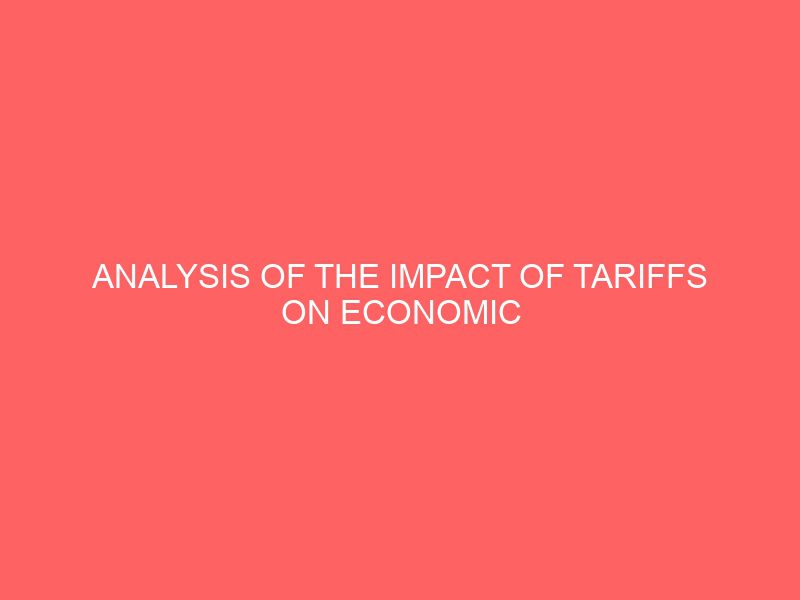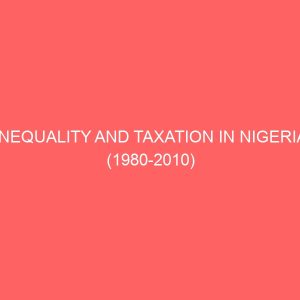Description
ABSTRACT
This study looks at the impact of tariff on the economic growth of Nigeria. It examines the extent to which tariff has brought about economic growth in Nigeria between the period of 19802010. Tariff which is a form of tax or trade restriction levied on imported goods, in order to encourage the infant industries from international competitions, this can boost economic growth. The ordinary least square method of regression was used to analysis the relationship between tariff and economic growth. the Ttest was used to determine the individual parameter estimate. The Ftest was used to determine significance of the entire regression. Econometric analysis also was used to determine the impact of the tariff and other variables like real gross domestic product as a proxy to economic growth, export, exchange rate and trade openness on economic growth in Nigeria. The findings from the regression result show that tariff has a positive statistical significant impact on economic growth in Nigeria. In conclusion, tariff including the other variables all work together to stimulate economic growth. It was recommended that policy on trade should be made to improve tariff imposition in Nigeria.
TABLE OF CONTENTS
Approval page i
Dedication ii
Acknowledgement iii
Abstract v
Table of contents vi
CHAPTER ONE
INTRODUCTION
1.1 Background of the study 1
1.2 Statement of research problem 3
1.3 Objective of the research study 4
1.4 Statement of the hypothesis 5
1.5 Relevance of the study 5
1.6 Limitation of the study 6
CHAPTER TWO
LITERATURE REVIEW
2.1 Literature Review 7
2.2 Theoretical review 8
2.3 Arguments for trade barriers 12
2.3.1 Infant industry arguments 12
2.3.2 protecting consumers arguments 13
2.3.3 National security argument 13
2.3.4 Retaliation argument 13
2.3.5 Protecting domestic employment argument 14
2.3.6 wage protection argument 14
2.3.7 Protection against dumping 15
2.4 Empirical literature 16
2.5 Limitations previous studies 22
CHAPTER THREE
METHODOLOGY
3.1 Methodological Framework 24
3.2 Model 25
3.3 Model Specification 25
3.4 Economic Aprion Battery Test 26
3.4.1 Stationary Unit Root Test 26
3.4.2 CoIntegration 27
3.5 Technique Of Estimation 27
3.6 Method Of Result Evaluation 28
3.7 Source of Data 31
CHAPTER FOUR
EMPIRICAL RESULT
4.1 Presentation of regression results 32
4.1.1 Stationary unit root analysis 32
4.1.2 Cointegration test 34
4.2 Evaluation of regression result 35
4.2.1 Evaluation based on economic apriori criteria 36
4.2.2 Evaluation based on statistical criteria 37
4.2.3 Evaluation based on econometric criteria 40
4.2.4 Evaluation of research hypothesis 46
4.3 Research findings 46
CHAPTER FIVE
SUMMARY, POLICY RECOMMENDATIONS AND CONCULSION
5.1 summary of research findings 47
5.2 Policy recommendations 47
5.3 Conclusion 50
Bibliography 51
Appendix 53








Reviews
There are no reviews yet.